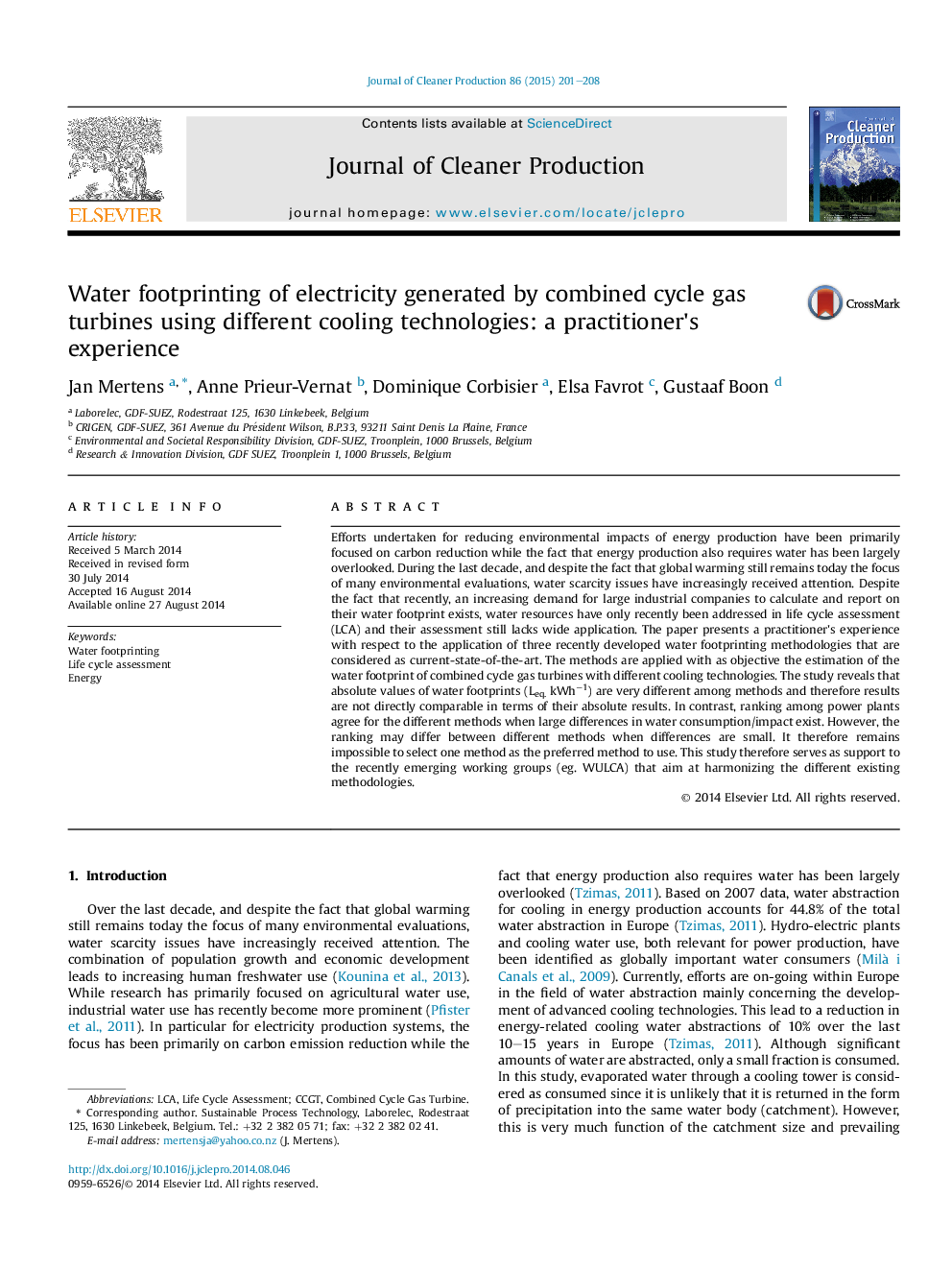| کد مقاله | کد نشریه | سال انتشار | مقاله انگلیسی | نسخه تمام متن |
|---|---|---|---|---|
| 1744717 | 1522160 | 2015 | 8 صفحه PDF | دانلود رایگان |
• Water consumption for electricity generation has been overlooked.
• The study compares existing water footprinting methodologies.
• Harmonisation of the different methods is required.
• Temperature and water quality changes need to be incorporated.
Efforts undertaken for reducing environmental impacts of energy production have been primarily focused on carbon reduction while the fact that energy production also requires water has been largely overlooked. During the last decade, and despite the fact that global warming still remains today the focus of many environmental evaluations, water scarcity issues have increasingly received attention. Despite the fact that recently, an increasing demand for large industrial companies to calculate and report on their water footprint exists, water resources have only recently been addressed in life cycle assessment (LCA) and their assessment still lacks wide application. The paper presents a practitioner's experience with respect to the application of three recently developed water footprinting methodologies that are considered as current-state-of-the-art. The methods are applied with as objective the estimation of the water footprint of combined cycle gas turbines with different cooling technologies. The study reveals that absolute values of water footprints (Leq. kWh−1) are very different among methods and therefore results are not directly comparable in terms of their absolute results. In contrast, ranking among power plants agree for the different methods when large differences in water consumption/impact exist. However, the ranking may differ between different methods when differences are small. It therefore remains impossible to select one method as the preferred method to use. This study therefore serves as support to the recently emerging working groups (eg. WULCA) that aim at harmonizing the different existing methodologies.
Journal: Journal of Cleaner Production - Volume 86, 1 January 2015, Pages 201–208
